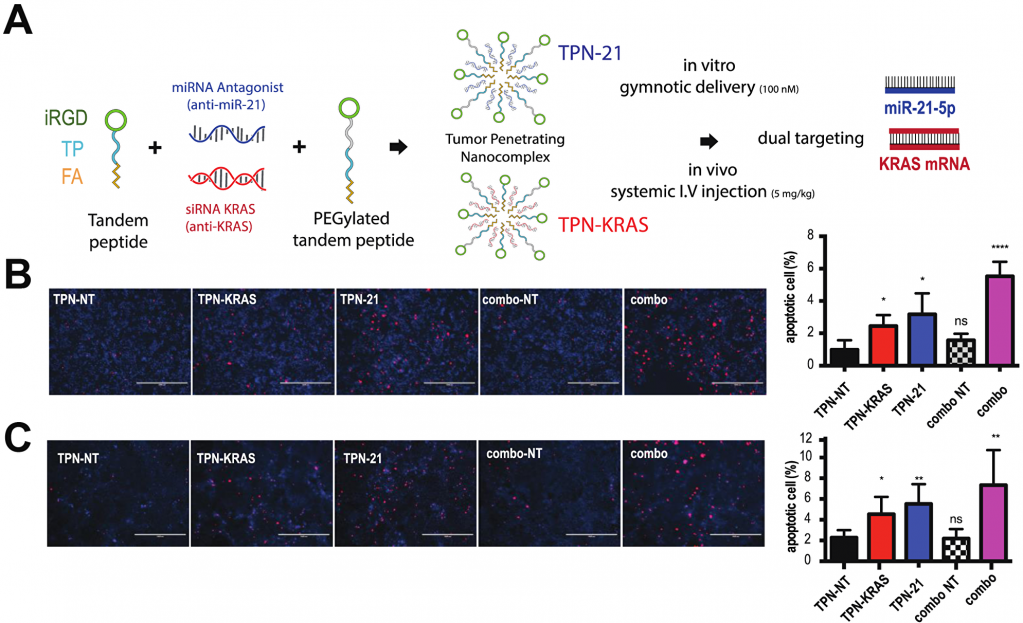Content #1
Content #1
Content #1
Pancreatic ductal adenocarcinoma (PDAC) is an aggressive and lethal cancer that is difficult to treat. It accounts for 95% of all pancreatic cancers and is a leading cause of all cancer-related deaths with an extremely low 5-year survival rate and poor prognosis. The most significant challenges to treatment are late-stage diagnosis and the lack of effective therapeutic options. A contributing factor to treatment difficulty is the presence of a strong desmoplastic reaction (fibrous and connective tissue around a tumor) which impairs drug delivery and penetration in PDAC tumors.
KRAS mutations and miRNA dysregulation have been shown to be part of the PDAC signature profile and are strongly correlated with tumor progression and survival. Recent strategies for improved tumor-homing and penetration include iRGD peptide-guided tumor penetrating nanoparticles (TPN). In a recent publication in Oncotarget, Gilles et al. evaluated a combinatory approach using TPN-loaded siRNAs or miRNAs targeting both the KRAS oncogene and the miR-21 oncomiR in organoid and mouse models of PDAC. Anti-tumor effects from the dual therapy were validated using NucView® 530 caspase-3 substrate. While the study demonstrated an enhanced anti-tumor response from simultaneous targeting of the two PDAC drivers in the cell and organoid models, the results are inconclusive as in vivo only a subset of the animals showed a significant reduction in tumor growth. Additional work will be required to determine the factors affecting therapy efficacy including variability in TPN delivery, the functional activity of the RNA therapeutics themselves, or the in vivo tumor-specific profiles.
Learn more about Biotium’s NucView® caspase-3 substrates and kits. We also offer a range of other cell viability and apoptosis reagents and cellular and organelle stains for multi-color imaging.

Full citation:
Gilles ME, Hao L, Brown K, Lim J, Bhatia SN, Slack FJ. Tumor penetrating nanomedicine targeting both an oncomiR and an oncogene in pancreatic cancer. Oncotarget. 2019 Sep 3;10(51):5349-5358. doi:10.18632/oncotarget.27160.